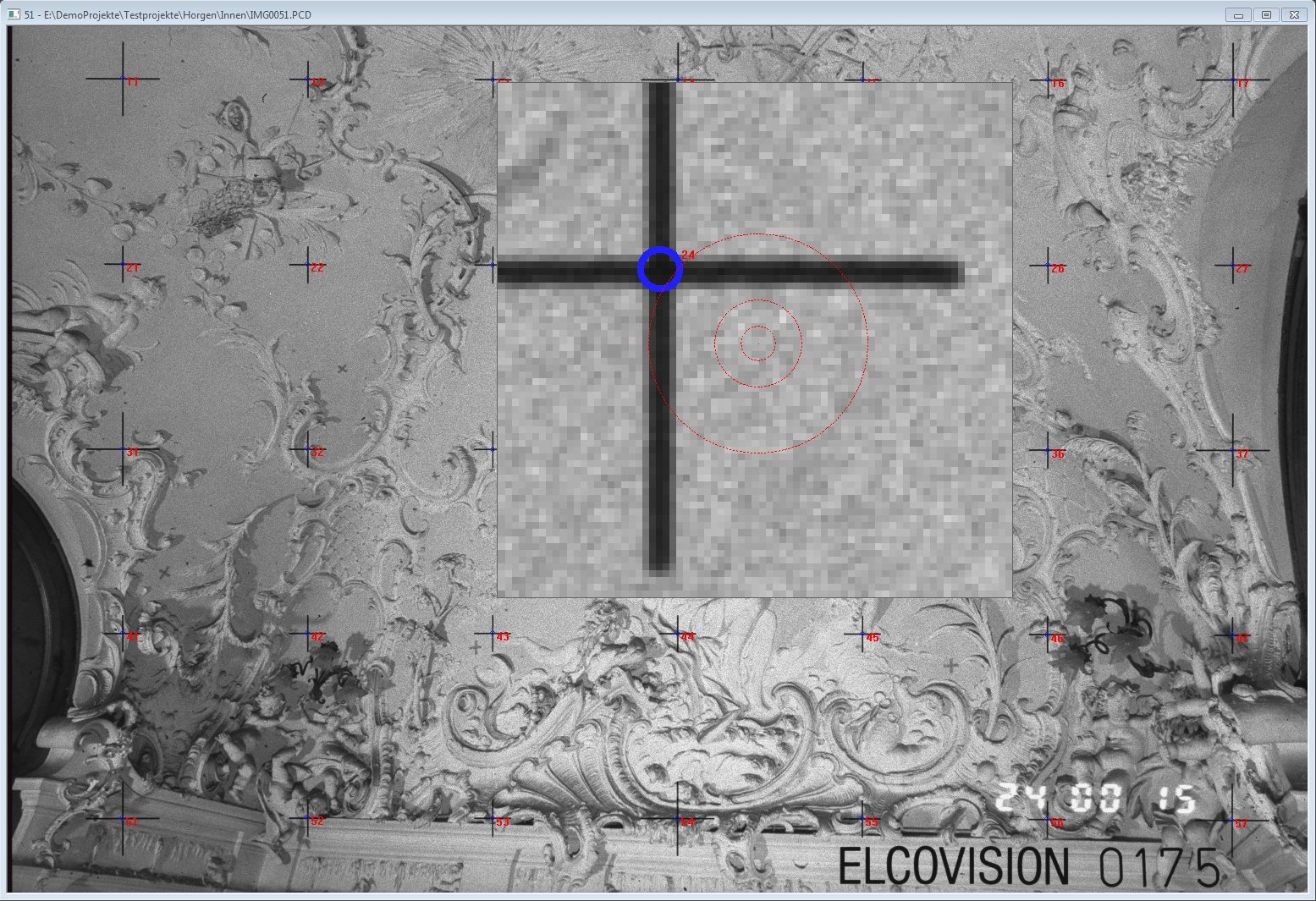Réseau Measurement of Images of Analog Metric Cameras

With images from analog metric cameras, the réseau measurement process in ELCOVISION 10 is highly automated. In this case, the réseau measurement compensates a number of falsifying influences, such as the non-planar position of the film in the camera, the distortions and compressions of the film material due to the development process, and the non-linearities of the scanner when scanning in the developed image, etc. These errors are very small and not visible to the naked eye, but they prevent precise measurements.
For this purpose, a so-called Réseau grid plate is built into the analogue metric cameras, whose high-precision etched Réseau crosses are automatically included in the exposure.

Since the réseau crosses are etched onto the glass substrate with extreme precision and their target positions are therefore known exactly, the errors mentioned above can be mathematically compensated for by measuring their actual positions in the image.
The réseau crosses are measured by ELCOVISION 10 fully automatically with high subpixel accuracy and then an optimal réseau transformation is performed based on the number and geometric distribution of the successfully measured réseau crosses:
- Helmert: Compensates a film rotation, the film shift in the camera and a scale factor (film buckling).
- Affin: Additionally compensates another scale factor (film upset) and another rotation of the film.
- Projective: Additionally compensates for perspective distortions caused by film processing into paper prints.
- Polynomial: Additionally compensates radially symmetrical deformations and local deformations caused by film processing or scanning the image.
As a special case, there is the réseau measurement of images from non-metric analogue cameras, such as images from normal amateur cameras or historical recordings. Here the image corners are measured as réseau marks. The more precisely the negative size is known, the better the image can be introduced into the orientation measurement later.




